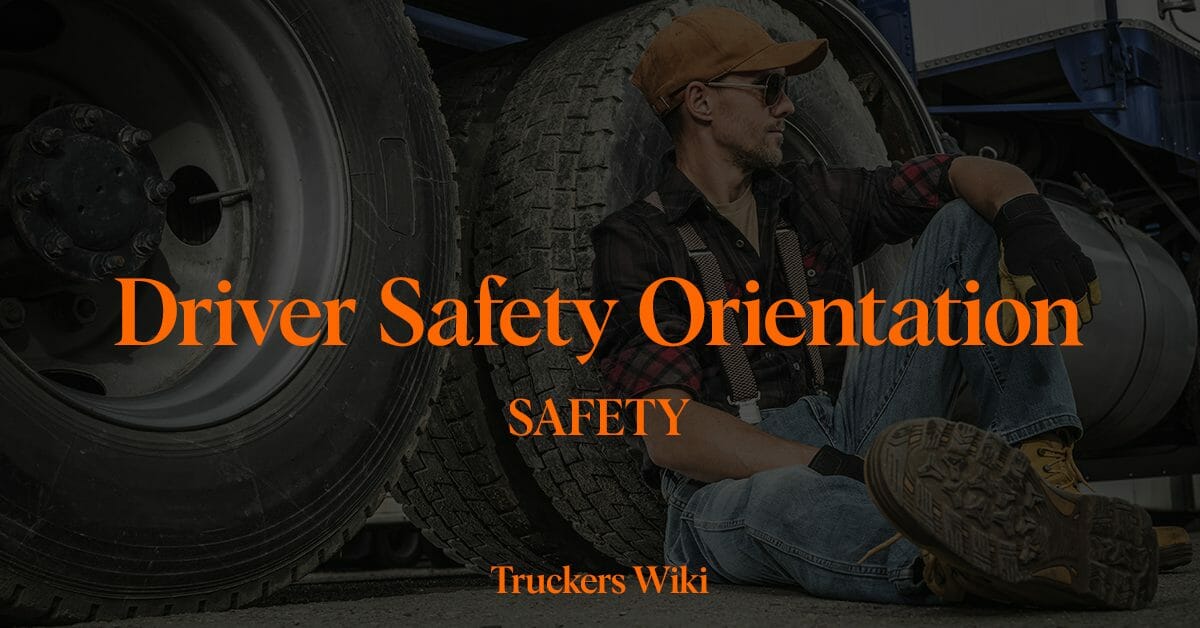
Table of Contents
What is Driver Safety Orientation
A comprehensive driver safety orientation is a critical first step in preparing new truck drivers for the challenges they will face on the road. It lays the foundation for a strong safety culture within a trucking company and ensures that drivers are well-versed in company policies, federal and state regulations, and best practices for operating a commercial vehicle. This article will explore the importance of driver safety orientation and the key topics that should be covered during this essential training.
Why Driver Safety Orientation Matters
Driver safety orientation is crucial for several reasons:
Establishing a safety culture
A thorough safety orientation sets the tone for a company’s commitment to safety, reinforcing the importance of safe practices and behaviors from the very beginning of a driver’s career.
Compliance with regulations
A thorough safety orientation sets the tone for a company’s commitment to safety, reinforcing the importance of safe practices and behaviors from the very beginning of a driver’s career.
Reducing accidents and incidents
A well-trained driver is less likely to be involved in accidents, leading to lower costs associated with insurance, vehicle repairs, and potential legal liabilities.
Improving driver retention
A comprehensive safety orientation demonstrates a company’s investment in its drivers, contributing to increased job satisfaction and reduced turnover rates.
Enhancing company reputation
A strong safety record is an asset in the competitive trucking industry, helping to attract and retain clients and qualified drivers.
Key Topics to Cover in a Driver Safety Orientation
A successful driver safety orientation should cover a range of topics to provide new drivers with a solid understanding of safe driving practices and company expectations.
Key topics include:
Company safety policies and procedures: Introduce new truck drivers to the company’s safety policies, explaining the expectations for driver behavior and the consequences for non-compliance.
Federal and state regulations: Familiarize drivers with relevant regulations, such as hours-of-service rules, vehicle inspection requirements, and drug and alcohol testing procedures.
Defensive driving techniques: Teach truckers the principles of defensive driving, which can help them anticipate and avoid potential hazards on the road.
Learn more about Defensive Driving here.Vehicle inspections and maintenance: Explain the importance of pre-trip and post-trip inspections, and discuss the proper procedures for performing these inspections and maintaining the vehicle.
Load securement: Educate truck drivers on the proper techniques and equipment for securing cargo, as well as the potential consequences of improper securement.
Accident reporting and documentation: Instruct drivers on how to report accidents, collect necessary information, and document the incident according to company and regulatory requirements.
Emergency procedures: Train drivers on the appropriate actions to take in various emergency situations, such as vehicle fires, hazardous material spills, or medical emergencies.
Communication protocols: Teach drivers how to effectively communicate with dispatch, customers, and other drivers, including the use of appropriate communication tools and technology.
Conclusion
A comprehensive driver safety orientation is an essential component of a successful safety program in the trucking industry. By providing new drivers with a solid foundation in company policies, regulatory compliance, and safe driving practices, trucking companies can reduce the risk of accidents and incidents, improve driver retention, and maintain a strong reputation in the industry. Investing in a thorough and effective driver safety orientation ultimately contributes to the long-term success and growth of a trucking company.
Here is a great video of Mig Way giving out 6 safety tips for truck drivers.

